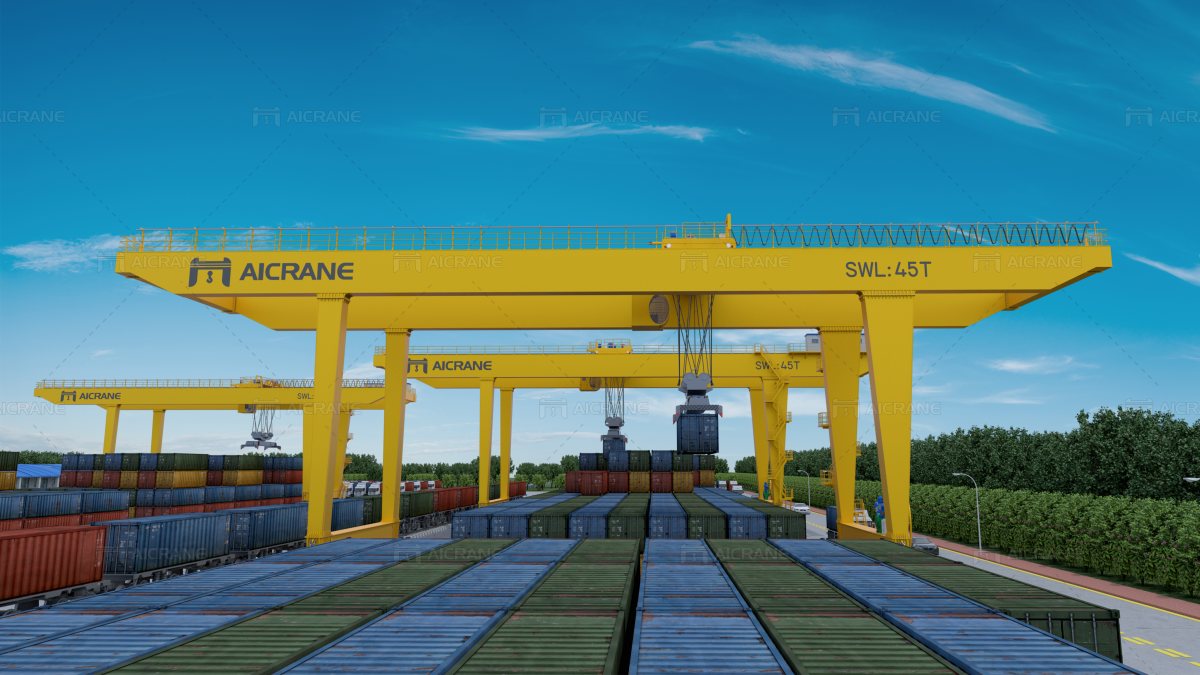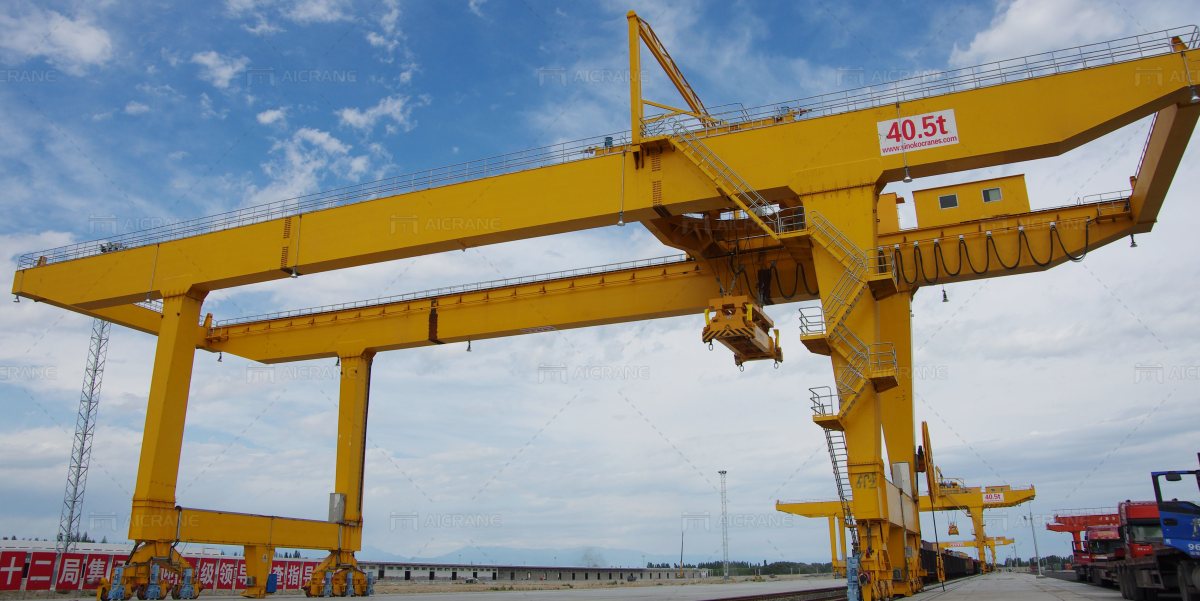Rail mounted gantry cranes (RMGs) are highly efficient and versatile lifting solutions used in various industries. They are commonly employed in container terminals, intermodal yards, and rail yards for handling and stacking containers with precision and speed. In this article, we will explore the uses and features of rail mounted gantry cranes, highlighting their significant contributions to material handling operations and the key characteristics that make them indispensable assets in the modern industrial landscape.

Container Handling in Ports and Terminals
One of the primary uses of rail mounted gantry cranes is in container terminals. These cranes are specifically designed to handle containers with efficiency and accuracy. Equipped with a spreader, rail mounted container gantry cranes can lift and transport containers from trucks or railcars to the stacking yard or vice versa. Their ability to navigate along rails allows them to cover a large area and efficiently stack containers in designated rows or blocks. The precision and speed of these cranes enable rapid container handling, ensuring smooth operations in busy ports and terminals. Rail mounted gantry cranes are crucial for optimizing container storage, maximizing the utilization of available space, and facilitating the seamless movement of containers between different modes of transportation.
Intermodal Yards and Rail Yards
Rail mounted gantry cranes also find applications in intermodal yards and rail yards. These cranes play a vital role in the efficient transfer of containers between trucks, railcars, and storage yards. They enable the smooth movement of containers from railcars to trucks for onward transportation or vice versa. Rail mounted gantry cranes operating in intermodal and rail yards are designed to handle heavy loads and ensure secure container transfer, minimizing the risk of damage or accidents. The ability to navigate along rails allows them to cover a large area, serving multiple tracks and facilitating the seamless flow of containers in these crucial hubs of transportation.

Key Features of Rail Mounted Gantry Cranes
Rail mounted gantry cranes offer several key features that make them essential crane lifting equipment in material handling operations. First and foremost, their ability to run on rails provides excellent stability and precise control during lifting and movement operations. This rail-mounted configuration ensures smooth and controlled travel along predefined paths, minimizing sway and improving operational safety.
The lifting mechanism of rail mounted gantry cranes comprises a spreader that can be adjusted to accommodate different container sizes. This versatility allows for efficient handling of various container types, including standard, high cube, and refrigerated containers.
Another notable feature of rail mounted gantry cranes is their lifting capacity. These cranes are designed to handle heavy loads, typically ranging from 30 ton to 120 tons or more, depending on the specific model and requirements of the application. Their robust construction and powerful lifting mechanisms enable them to handle containers with ease, contributing to high productivity and efficient material handling.
Safety is a paramount consideration in the design of rail mounted gantry cranes for sale. They are equipped with advanced safety features such as anti-collision systems, overload protection, and emergency stop mechanisms. These features ensure the safety of both the operators and the surrounding environment, reducing the risk of accidents and minimizing downtime.
Rail mounted gantry cranes are versatile and efficient lifting solutions widely used in container terminals, intermodal yards, and rail yards. With their precise control, high lifting capacity, and advanced safety features, these cranes significantly contribute to the smooth and efficient handling of containers, improving productivity and optimizing material handling operations in various industries.